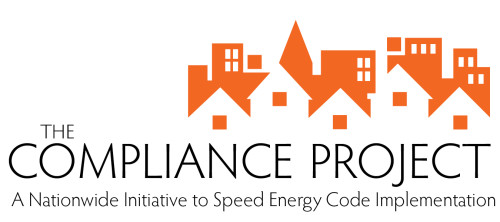In 2009, desperate for economic relief, governors of all 50 U.S. states pledged to increase energy efficiency in buildings in exchange for a combined $3.1 billion in state energy program funding through the American Recovery and Reinvestment Act.
While a larger share of Recovery Act funds was poured into other longstanding programs, such as weatherization, a provision of the bill, Section 410, linked state energy program funding to tougher energy codes for new construction and major renovations.

About 40 percent of U.S. energy consumption provides heat, cooling and power to buildings. Building energy codes are widely seen as cost-effective policy tools to combat emissions, lower homeowner utility costs, and increase home comfort and value.
Section 410 required states not only to implement codes that met or exceeded the 2009 International Energy Conservation Code and the 2007 ASHRAE 90.1 standard for houses and commercial facilities, respectively, but also to develop a plan to achieve compliance “within 8 years…in at least 90 percent of new and renovated residential and commercial building space.”
Reaching that target now appears unlikely. Predictably, the strings attached to the Recovery Act funding stirred controversy among a few governors at the time — most notably Alaska’s Sarah Palin, whose veto prompted a rare threat of legislative override. All states eventually accepted the money, but now, seven years later, 16 still either lack a statewide energy code altogether or have old codes that fall short of the ARRA requirements.
Code Compliance Falls Short
Chris Dorsi, founder of Habitat X, a North American sustainable-housing think tank, says that although patchwork code adoption is a problem nationwide, a greater cause for concern is compliance among builders, even in states where reasonably strong energy codes already exist. “The vast majority of homebuyers — whether they buy new or existing homes — assume that their purchase is protected by layers of government oversight,” he said. “But when it comes to energy codes in residential construction, all bets are off. Tradespeople often have not been trained to perform the code-required installation and testing, contractors are under financial pressure to their low-bid competitors, and code inspectors often don’t care or even know the difference.”
“If a manufacturer of consumer goods in the U.S. engaged in this type of willful negligence, they’d surely end up in court. But the housing industry gets away with it. It’s as if we have a Volkswagen-type scandal in our midst.”
It’s not the first time the building sector’s struggle with efficiency regulations has been compared to the scandal that engulfed the world’s largest automaker last fall. But as the Recovery Act’s eight-year anniversary approaches in 2017, analysts have debated what implications, if any, that failure to meet the 90 percent compliance target will have for states and the builders they regulate.
Shari Shapiro, a consultant with Calliope Policy Advisors who has written extensively about energy codes, including the uncertainty about states’ ARRA assurances, says it’s anyone’s guess with a new administration on its way in next year. But she suspects the deadline will pass largely without consequence for laggard states, and argues that energy code policy has still seen substantial progress as a result of the Recovery Act.
“This was a little paper tiger. But I think it was well worth it. Basically, it didn’t cost the federal government anything [to enforce] and it got more energy codes adopted.”
Shapiro acknowledges that lax enforcement could weaken such tactics in the future, however, and that much more progress could have been made. She says the residential code, which increased energy efficiency requirements by 15 percent over the previous edition in 2006, was an especially important leap forward for the building industry.
While it was the first code to require duct-leakage testing for heating and cooling systems and include a performance-based compliance option for whole-building air leakage, the changes it brought about were within most builders’ levels of tolerance and skillset. More recent energy codes, particularly the 2012 IECC, have been criticized by some homebuilders as being too burdensome.
“It’s unfortunate that the 2009 code wasn’t adopted in all states, because that first 15 percent improvement was just not that much of a challenge. It was duct sealing and insulation and stuff everybody mostly already knew how to do. There was really no downside to adopting it,” said Shapiro.
Consumers Get a Bad Deal
Dorsi agrees that the 2009 code, which roughly half of U.S. states use today, was simple enough to have been implemented nationwide. But an informal survey of building performance experts conducted for his organization’s Compliance Project suggests actual compliance with the mix of codes in use across the country varies between 20 percent and 80 percent by jurisdiction. He says the true cost of non-compliance ultimately lands on consumers.
“It’s a simple-enough proposition to build the best house possible in order create a healthy, safe, comfortable, and economical place to call home. But we’ve seen that time and time again, homes being built today are rife with potentially serious defects that will ultimately need to be corrected by the owners. In the meantime, the occupants are saddled with a building that might be drafty, moldy, high-maintenance, and expensive to heat and cool. It’s a criminal situation, really, and homebuyers often don’t even know that they’ve been had,” said Dorsi.
Early results from a four-year U.S. Department of Energy study on compliance in eight states support Dorsi’s survey findings. Random tests of hundreds of new homes show little trouble with some aspects of the code — builders typically meet prescribed window specifications and wall insulation levels, for example — but reveal much more variability in building-enclosure and duct-leakage targets, major factors in overall building efficiency and comfort.
The metrics for determining compliance have shifted over time as well, according to Harry Misuriello, a visiting fellow at the American Council for an Energy-Efficient Economy.
“Ninety percent compliance used to mean if there were 100 requirements and you met 90 of them, your compliance rate was 90 percent. That might have included administrative requirements or other non-energy saving measures. The real indicator is the ratio between the design energy consumption calculations for at-code and as-built conditions. You’re comparing the asset rating of a theoretical model built to the code to that of an actual building.”
The Building Codes Assistance Project has mapped commercial and residential energy code adoption across the U.S. But Misuriello has reason to believe the de facto influence of energy codes may be greater than it appears from looking solely at implementation by state.
“The difference is local authority — home rule — and secondly, construction volume,” he said. “Colorado has no statewide code, for example, but major metro areas might be on the 2015 IECC, and that’s where the volume is. Nebraska is another home-rule state that has codes in urban areas like Lincoln and Omaha. Most construction occurs in metro areas, and codes are being pursued at the local level in response to urban areas’ need for sustainability planning.”
Asked whether helping builders improve compliance could help states meet their Clean Power Plan targets, Shapiro says that while there’s plenty of room for improvement, increased compliance with codes already in place is not considered an energy savings strategy by the feds.
“The underlying energy use and savings calculations for each state are based on the existing law. There’s an assumption it’s being complied with,” said Shapiro.
Simple Code Compliance Would be a Big Step
The difference between compliance on paper and compliance in practice is precisely what Dorsi’s project intends to uncover. But since it’s a hidden subject by its nature, it can be difficult to ascertain how often industry does right by the code.
In the end, he says, it comes down to educating consumers and raising the profile of tradespeople and contractors who do excel in meeting or surpassing energy codes.
“We have all the tools we need to get this job done. We know how to build high-performance homes. We have codes that can be used to define how those homes should operate. We have a willing and capable workforce. We have a contracting community that just wants to follow the laws. And most citizens — the people who live in the homes we create — have expectations that the products they buy will perform as advertised. We just need to put all these pieces together, and offer truly efficient, safe, and comfortable housing to everyone. It’s just not that hard,” said Dorsi.
— Ryan Boswell and Griffin Hagle
(This article was originally published in Greentech Media. Support for this research comes from The Compliance Project.)


